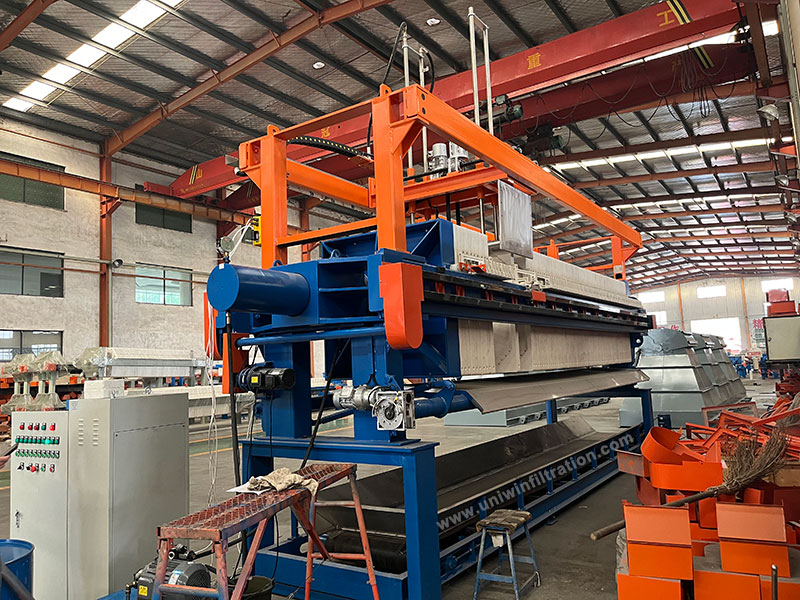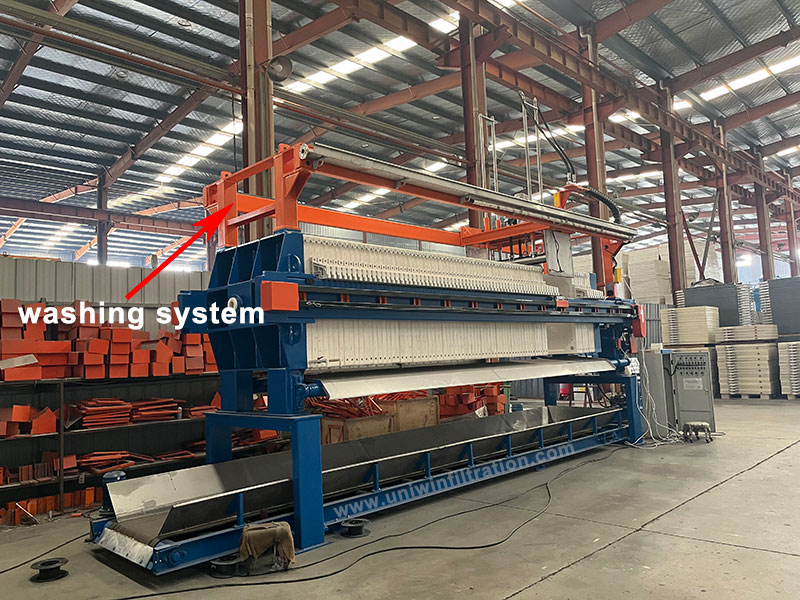Causes and Solutions for Inadequate Filter Cloth Cleaning
Improper filter cloth cleaning is a common problem in filter press operation. Improper handling can not only reduce filtration efficiency but also shorten the filter cloth’s service life and even cause equipment failure. The following are common causes of inadequate filter cloth cleaning and their corresponding solutions.
Filter Cloth Cleaning Video
Common Causes of Incomplete Filter Cloth Cleaning
Insufficient cleaning water pressure
Filter cloth cleaning is typically performed with a high-pressure water gun or automated cleaning system. Insufficient water pressure prevents the effective flushing of residue from the filter cloth surface and pores, resulting in incomplete cleaning.
Poor water quality (sand, excessive impurities)
Using water sources containing impurities (such as unfiltered recycled water) not only affects cleaning performance but can also cause filter cloth clogging and secondary contamination.
Infrequent filter cloth cleaning
If the filter cloth is used for too long without being cleaned, sludge can dry onto the surface or seep into the fiber layer, making cleaning significantly more difficult.
Mismatched filter cloth material or pore size
The filter cloth material may be inappropriate for the type of sludge being processed, or the pore size may be too small, making it prone to clogging and difficult to clean.
Improper cleaning methods
Using the wrong cleaning agent, cleaning at the wrong angle, or failing to perform adequate mechanical scrubbing can all affect the thoroughness of the filter cloth cleaning.

Solutions and Suggestions
Increase water pressure or replace the cleaning system
Check the cleaning pump and nozzle for blockage and ensure the cleaning pressure meets normal standards.
If using an automatic sprinkler system, it is recommended to regularly replace the nozzles and check the spray angle.
Use high-quality rinse water
Use filtered clean water for cleaning whenever possible, and avoid using untreated recycled water.
If conditions permit, install a dedicated rinse water treatment system.
Clean the filter cloth regularly
It is recommended to clean the filter cloth every few cycles, adjusting the cleaning interval based on the properties of the mud cake.
For difficult-to-clean materials, more frequent cleaning or the use of specialized cleaning agents can be recommended.
Choose the right filter cloth type
Select a filter cloth material that’s corrosion-resistant, clogging-resistant, and easy to clean based on the material being processed.
For example, for highly viscous sludge, choose polyester monofilament filter cloth, which is easier to clean.
Use chemical or high-temperature cleaning methods
For stubborn dirt, soak the filter in a mildly alkaline or neutral detergent.
In some cases, hot water below 80°C can be used to improve cleaning effectiveness (be careful not to exceed the filter cloth’s upper temperature limit).
Replace the filter cloth regularly
If the filter cloth becomes noticeably clogged, damaged, or its cleaning performance significantly degrades, it should be replaced promptly.
The typical service life of the filter cloth is six months to one year, depending on the intensity of operation.

Conclusion
Maintaining clean filter cloths not only extends equipment life but also improves filtrate quality and filtration efficiency. It is recommended that companies establish a comprehensive filter cloth management process, including selection, daily cleaning, regular maintenance, and replacement. Through scientific management and proper maintenance, production problems caused by improperly cleaned filter cloths can be effectively avoided.
To further enhance the overall operating efficiency of the filter press, an automatic filter cloth cleaning system can be considered. This is particularly suitable for environments with high throughput and frequent operation.
